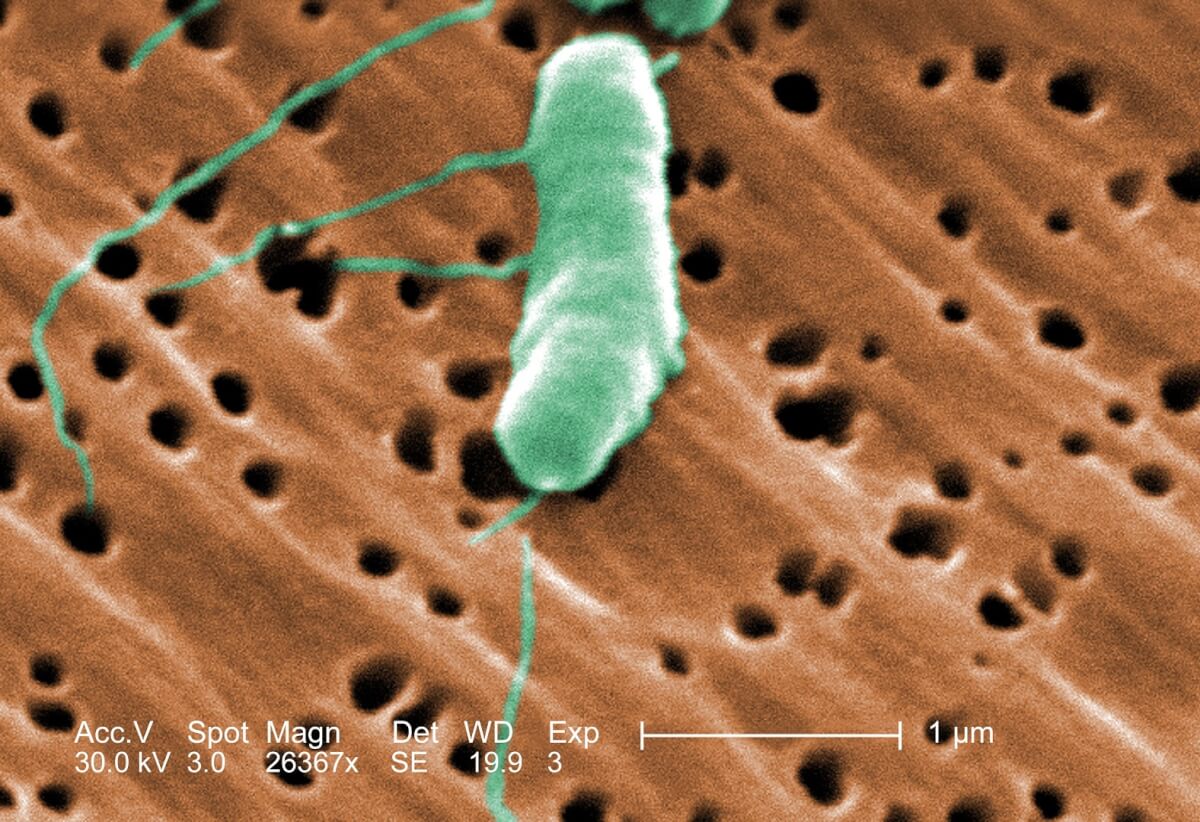In the summer of 2018, a South Texas man died after wade fishing in the Gulf of Mexico. A fatality was also recorded in Virginia and a man from New Jersey was left in critical condition after crabbing near the Delaware Bay. In all three cases, the culprit came from the same family: Vibrio.
What It Is
According to the Centers for Disease Control and Prevention (CDC), Vibrio bacteria “…naturally live in certain coastal waters and are present in higher concentrations between May and October when water temperatures are warmer.”
Around a dozen Vibrio species can cause illnesses and even death. The most common illness-causing Vibrio species in the United States are Vibrio parahaemolyticus, Vibrio vulnificus, and Vibrio alginolyticus.
In the U.S. alone, an estimated 80,000 cases of illnesses and 100 deaths from Vibrio are reported annually.

Flesh Eater
Of the many Vibrio species that can cause illnesses, Vibrio vulnificus is the one infamously known as the “flesh-eating bacteria.” The CDC estimates that the bacteria infects an average of 205 people per year in the United States.
In July of 2018, 60-year-old New Jersey resident Angel Perez contracted an infection while crabbing in the Maurice River, a tributary of Delaware Bay in Salem County, New Jersey. His right leg became swollen and painful and turned a dark color. A few hours later, the swelling and the blistering had spread throughout his body. After several trips to the emergency room, it was discovered that he had been infected by Vibrio vulnificus, which had entered his body through an open wound on his leg.
Angel Perez was left in critical condition and faced amputation of at least his fingers and toes if his body didn’t respond to antibiotics.
While Perez was battling for his life, others aren’t so lucky.
In Virginia, health officials have confirmed the death of one resident who became infected by the bacteria. According to Katherine McCombs, a foodborne disease epidemiology program coordinator at the health department, the person died from an infection by Vibrio vulnificus.
It is the first Vibrio-related death this year in the state. 23 other people in Virginia have contracted illnesses because of the bacteria, slightly higher compared to recorded cases in 2017.

Vibrio’s M.O.
While Vibrio cases often peak during the late spring until early fall in the northerly states, they can be active all year round in warmer southern waters, like in Florida.
Vibrio vulnificus can cause two types of infections. These include acute gastroenteritis and sepsis among those who ingest contaminated shellfish, and necrotizing wound infections if the bacterium infects an open wound.
A healthy individual can experience vomiting, diarrhea and abdominal pain. For those with compromised immune systems, especially in people with chronic liver disease, the bloodstream can get affected and cause severe illnesses with fever and chills, blistering skin lesions and septic shock.
Vibrio vulnificus infections are serious and require immediate medical attention. According to the CDC, about 1 in 7 individuals with a wound infected by Vibrio vulnificus die. Just like the case of Angel Perez, amputation may be necessary to remove dead and infected tissue in the body.

How to Protect Yourself
While rare, you should still take the necessary steps to protect yourself from Vibrio vulnificus when in high-risk areas or situations. Here are some ways to reduce the risk of infection from this bacterium.
1. Observe Proper Hygiene When Preparing Shellfish and Oysters
Always wash your hands with soap and water after handling raw shellfish. When preparing and handling shellfish for food, throw away those with opened shells and avoid contaminating cooked shellfish with raw ones by using different containers.
If you need to handle raw seafood, wearing gloves is recommended.
2. Do Not Eat Raw or Undercooked Shellfish
Boil or steam them until their shells open and continue cooking them for a couple more minutes (5 – 10 minutes will be enough).
3. Properly Cook Shucked Oysters
As with shellfish, oysters should also be properly prepared and cooked to make sure they’re free from Vibrio.
You have different options for oysters, depending on how you want them cooked. You can either boil or fry shucked oysters for at least three minutes (fry them at 375 degrees (F)). If you want to broil them, do so three inches from your heat source for three minutes. You can also bake them for 10 minutes, making sure the temperature they’re baked in is at 450 degrees (F).
4. Stay Away from Brackish Water If You Have an Open Wound
If you have a cut or a scrape that could come into contact with brackish water, raw seafood, or raw seafood juices, protect your wound with a waterproof bandage or avoid contact completely.
Wear protective clothing, such as sturdy footwear and clothes, to protect yourself from cuts and abrasions when you’re in brackish water.
5. Beware of Flood Water
Even if you don’t go to the sea, brackish water can seep inland during storms and hurricanes and contaminate flood water. If you really must venture out during a flood, wear protective clothing that can keep water out and prevent you from sustaining small wounds that can get infected as well.

These are just some of the ways you can protect yourself from being infected by Vibrio vulnificus, but sometimes, even with all the vigilance, something can still slip past your defenses. If you develop a skin infection that you suspect is due to contact with brackish or saltwater or raw seafood, consult your medical provider immediately.
In cases of vibrio infection, time is very important and the faster an accurate assessment can be made, the higher the chances that it can be prevented from doing too much damage.
For now, illnesses and deaths from Vibrio infections are still considered rare. But with rising water temperatures, we may see increasingly more cases in the future. Be prepared, stay safe and survive.




